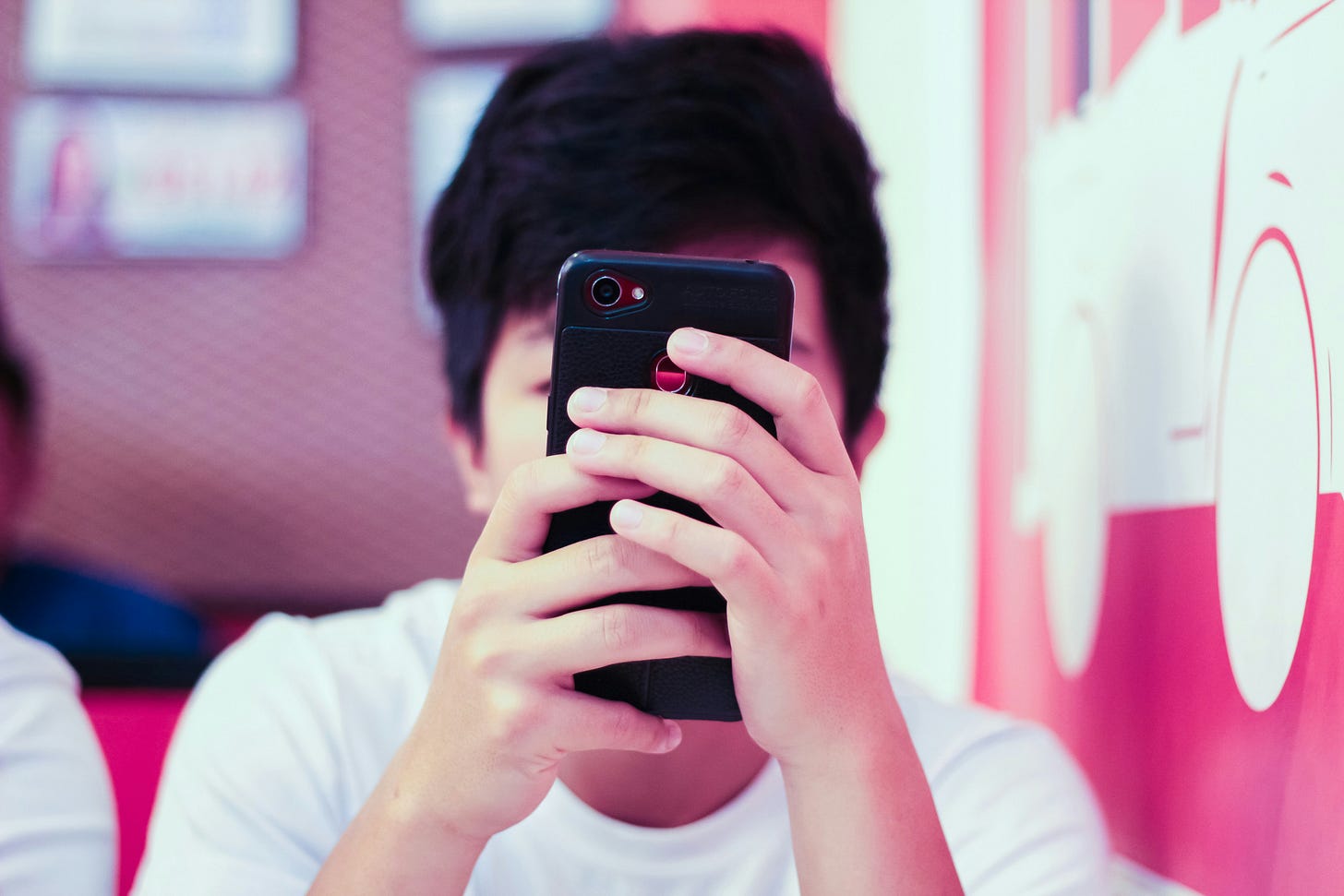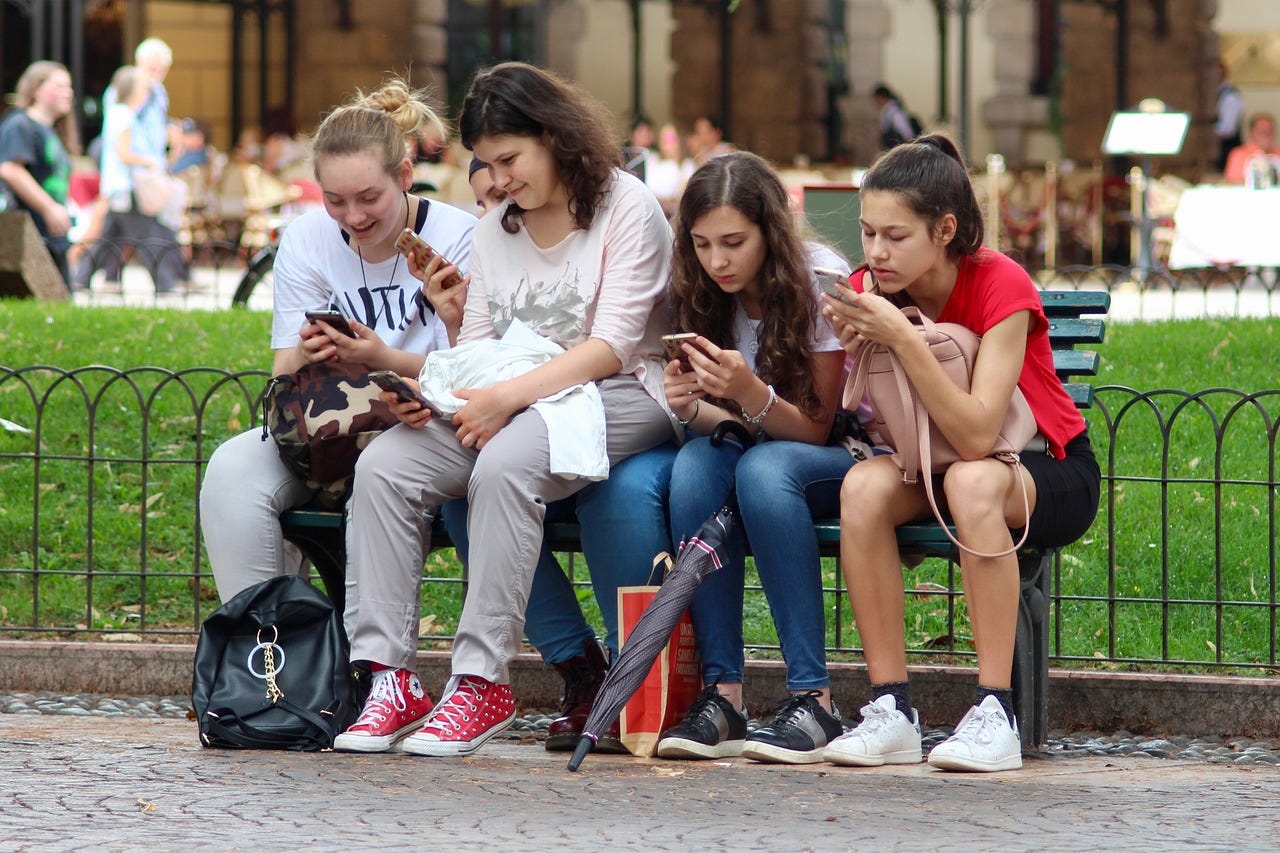Restricting Cell Phone Use in Roseville Area Schools
A look at what's changed, how it's going, and why it matters

Starting March 15, 2025, all public school districts across the state must have cell phone policies in place in compliance with a new Minnesota law passed last year. Anticipating this, Roseville Area Schools rolled out new district-wide rules restricting cell phone use starting at the beginning of the 24-25 school year.
“Our school administrators were like, hey, let’s get ahead of this. Let’s begin as we mean to go,” Associate Superintendent Melissa Sonnek said.
Since the beginning of the school year at Roseville Area High School and Fairview Alternative High School, cell phones must be put away during class, but can be used during passing time and lunch. Students have the option between putting their phone in a bin in the classroom or leaving them on silent in their pockets or backpacks.
For middle school, students are allowed to keep their devices in their backpacks or lockers on silent, but they are not allowed to use them at all during the school day.
At elementary schools, students aren’t allowed to have cell phones at all during the day. If a student does have one, they must turn it in to the teacher or school office. This applies to Airpods, smart watches, and any device capable of making calls or sending/receiving messages.
For all schools and grade-levels, cell phones are allowed before and after school and while riding the bus. Any device that can capture photo or videos are banned from bathrooms and locker rooms district wide.
Policy and Process for Making Cell Phone Rules
To be in compliance with state law, the school board needs to have an official “policy” in place by March 15, which is what the school board reviewed and approved on Feb. 26. This policy, part of the Acceptable Use Policy 400, states:
“The superintendent and school district administration will establish rules and procedures regarding student possession and use of cell phones in schools. These rules and procedures will seek to minimize the impact of cell phones on student behavior, mental health, and academic attainment. These rules and procedures may be designed for specific school buildings, grade levels, or similar criteria.”
Putting the details of the rules and procedures on the school administrators allows the schools to be nimble in creating changes, Sonnek said. If every little change about the rules had to go through the school board, administrators would not be able to respond and adapt to changing situations.
For instance, in September RAHS went into lockdown due to reports of a suspected weapon (none was found) and students did not have access to their phones because they were all in the bins during class. Students gave feedback that they would really like to be able to contact their parents during situations like that. So, school administration amended the rules to say that once the classroom door is locked, students could have their phones back.
They’ve also given students the choice between putting their phones in the bin, or keeping it in their pockets or backpacks on silent. If families need to contact students during the day, they should call the front office, rather than contacting their student directly.
To create the cell phone rules, the district collaborated with school principals and educators. They consulted the guidance from the Minnesota Cell Phone Toolkit, created by the Minnesota Elementary School Principals Association and the Minnesota Association of Secondary School Principals.
In January, a bipartisan group of legislators in the Minnesota Senate introduced a new bill seeking to establish consistent cell phone rules across all Minnesota public schools. The law would prohibit cell phones and smart watches in schools for students in grades K-8 and prohibit them from classrooms for grades 9-12, with exceptions for medical needs and individualized education programs. The current draft of the bill is similar to what Roseville Area Schools is already doing.

Why restrict cell phone use in schools?
“The research around this is very clear,” Sonnek said. There’s a lot of energy around restricting phones in schools amongst educators, lawmakers, parents, and child development experts, she said.
Restricting cell phone use in schools improves academic performance, enhances mental health, creates a better classroom environment, and supports effective teaching, according to the MN Cell Phone Toolkit. Research has shown that students who use cell phones during class are more likely to experience social isolation and depression, are more likely to participate in cheating and engage less in class discussion, and retain and understand less of the information taught.
In September, this “Ted Talk style” video was shared with Roseville high school students and their parents, to help educate the community. In the video, Colleen Williams-Freier, RAHS Biology Teacher, presented about science of the brain and how cell phone usage interferes with learning. She begins by explaining that she was a teacher before there were cell phones, and after there were cell phones, so she’s seen the impact firsthand.
How are the new rules going?
The restrictions are easier to enforce in the elementary and middle schools, Sonnek reports—in fact, the rules haven’t really changed for K-8. Cell phones were already not allowed. At the high school level, it was hard at first, but then it got easier for everyone.
Four months into the school year, Sonnek hit the halls with a camera and interviewed several high school students for their reactions. In a video created for the school board, and shared with the Roseville Reader, students shared their experiences of adapting to the new rules.
“At first I was really shocked and surprised,” Mira Jackson, a junior at RAHS, said. “At the beginning of the school year it was stricter, but now you have the option of putting it in the bin or your backpack.”
Most students interviewed said they weren’t happy about the change in September, but now admit that they are learning better and paying more attention in class.
“A lot of kids don’t like it . . . but it really does help kids learn and talk to others and socialize better. It puts you in a better space to succeed,” Kellen O’Rourke, a senior at RAHS, said in the video.
Christine Craver, whose daughter is at Roseville Area High School, said she was relieved when the school loosened the rules to give cell phones back during lockdowns. Her daughter had been in the bathroom during the lockdown in September and was able to text her parents for support. None of them could imagine going through that again without being able to communicate via text.
“After they made that change I was a lot more comfortable,” Craver said.
Drew Bowman, a parent of four kids across elementary, middle, and high school, is in favor of more restrictions on cell phones. Having phones locked up for the day in a pouch or locker would take the burden of enforcement off of teachers, freeing them up to do the hard work of educating.
“Teachers should not have to be cell phone police,” Bowman said.
Ruth Gramza, a parent of students in kindergarten and second grade, said she’s glad the district is taking action, but the rules don’t go far enough. She referenced Jonathan Haidt’s recommendations in his book The Anxious Generation, which asserts that “not allowing phone use and still allowing kids to have phones on their person, is not effective,” Gramza summarized. She’d also like to see lockable pouches or phone lockers be required.
“The high school phone policy should be the same as the lower grades. Phones cause measurable harm to the developing brain and zero benefits,” Gramza said. “In addition to saving the developing brain from harm, let's also substantially reduce the risk of compromising or embarrassing pictures / videos of students (a minor child) being taken, uploaded and widely shared in a matter of minutes.”
It’s against the rules in Roseville Area Schools for students to take photos or videos of other students without permission.
“If you’re taping a fight, or recording what is somebody’s worst moment, that student who was harmed should not have to relive that experience by seeing it online,” Sonnek said. If a student violates this rule—and a peer’s privacy—in this way, disciplinary action will be taken, Sonnek said.
Even though phones are not allowed at Roseville Area Middle School (RAMS), teachers and administrators still educate students about healthy technology habits.
“We try to get ahead of the social media conflicts. Educating students on the harm that can come from ‘too much social media’ as well as navigating lots of conflict that comes from social media. We partner with families to help reduce and work through the conflict,” RAMS Principal Heidi George said.
According to Jen Wilson, principal at RAHS, the number of students receiving passing grades has increased and students seem more engaged in classes.
“The results at RAHS have been astounding—while there was some pushback at the beginning, we stayed firm as a staff and we rarely see phones out in classrooms,” Wilson said.
More information:
For further reading on this subject, check out these recent articles from area publications:





